Related Research Articles

The Lab-on-a-Chip Applications Development (LOCAD) element is a set of related lab-on-a-chip projects at NASA. The projects develop integrated lab-on-a-chip products in three areas related to space exploration: Environmental Control and Life Systems Support (ECLSS), Medical Systems, and Remote Exploration. NASA conducts activities related to these projects both at NASA Marshall Space Flight Center and aboard the International Space Station (ISS).

Kathleen Hallisey Rubins is an American microbiologist and NASA astronaut. She became the 60th woman to fly in space when she launched on a Russian Soyuz spacecraft to the International Space Station (ISS) on July 7, 2016. She returned to Earth in Kazakhstan on October 30, 2016, aboard a Soyuz. She was a crew member of Expedition 48/49 and Expedition 63/64 of the ISS. Rubins has spent a total of 300 days, 1 hour, and 31 minutes in space which is the fourth most days in space by a U.S female astronaut.

The International Space Station is a platform for scientific research that requires one or more of the unusual conditions present in low Earth orbit. The primary fields of research include human research, space medicine, life sciences, physical sciences, astronomy and meteorology. The 2005 NASA Authorization Act designated the American segment of the International Space Station as a national laboratory with the goal of increasing the use of the ISS by other federal agencies and the private sector.

The NASA Launch Services Program (LSP) is responsible for procurement of launch services for NASA uncrewed missions and oversight of launch integration and launch preparation activity, providing added quality and mission assurance to meet program objectives. LSP operates under the NASA Space Operations Mission Directorate (SOMD).

The European contribution to the International Space Station comes from 10 members of the European Space Agency (ESA) and amounts to an 8% share in the programme. It consists of a number of modules in the US Orbital Segment, ATV supply ships, launchers, software and €8 billion.

Orbital-1, also known as Orb-1, was the second flight of the Orbital Sciences Cygnus cargo spacecraft, its second flight to the International Space Station (ISS) and the third launch of the company's Antares launch vehicle. The mission launched on 9 January 2014 at 18:07:05 UTC.

Nanoracks LLC is a private in-space services company which builds space hardware and in-space repurposing tools. The company also facilitates experiments and launches of CubeSats to Low Earth Orbit.
The Center for the Advancement of Science in Space (CASIS), a non-profit organization, is the manager of the International Space Station United States National Laboratory, a US government-funded laboratory with principal research facilities located in the United States Orbital Segment of the International Space Station (ISS).

The Nanoracks CubeSat Deployer (NRCSD) is a device to deploy CubeSats into orbit from the International Space Station (ISS).
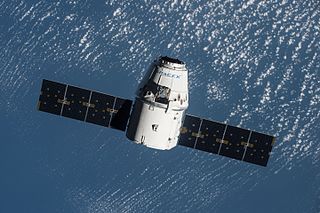
SpaceX CRS-9, also known as SpX-9, is a Commercial Resupply Service mission to the International Space Station which launched on 18 July 2016. The mission was contracted by NASA and is operated by SpaceX using a Dragon capsule.
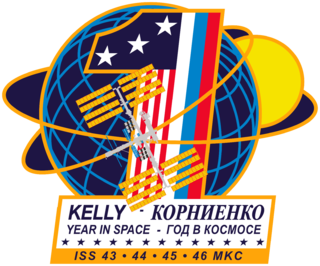
The ISS year-long mission was an 11-month-long scientific research project aboard the International Space Station, which studied the health effects of long-term spaceflight. Astronaut Scott Kelly and cosmonaut Mikhail Kornienko spent 340 days in space, with scientists performing medical experiments. Kelly and Kornienko launched on 27 March 2015 on Soyuz TMA-16M along with Gennady Padalka. The mission encompassed Expeditions 43, 44, 45 and 46. The pair safely landed in Kazakhstan on March 2, 2016, returning aboard Soyuz TMA-18M with Sergey Volkov. The mission supported the NASA Twins study, which helps shed light on the health effects of long-duration spaceflight, which is of interest for Mars missions especially.
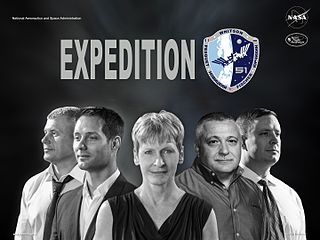
Expedition 51 was the 51st expedition to the International Space Station, which began upon the departure of Soyuz MS-02 on April 10, 2017, and concluded upon the departure of Soyuz MS-03 on June 2, 2017. Peggy Whitson, Oleg Novitskiy and Thomas Pesquet were transferred from Expedition 50, with Peggy Whitson taking the commander role. She is the first woman to command two expeditions to the ISS, having previously commanded Expedition 16.
DreamUp PBC is a Public-benefit corporation that offers space-based educational activities. DreamUp is a spin-off and sister company of Nanoracks LLC, a private spaceflight company. Nanoracks gives DreamUp access to research opportunities on the U.S. National Lab on board the International Space Station.
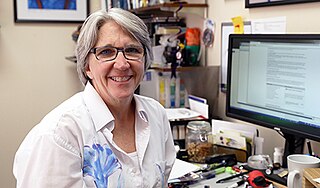
Sarah Wyatt is an American, plant molecular biologist. She is a Professor in the Department of Environmental and Plant Biology at Ohio University, as well as director of the Ohio University Interdisciplinary Graduate Program in Molecular and Cellular Biology. Wyatt's research interests include molecular biology, genomics, and signaling events. She is considered one of the world's experts on gravitational signaling in plants, and some of her recent research includes an experiment on board the International Space Station (ISS).

NASA's Rodent Research Hardware System provides a research platform aboard the International Space Station for long-duration experiments on rodents in space. Such experiments will examine how microgravity affects the rodents, providing information relevant to human spaceflight, discoveries in basic biology, and knowledge that can help treat human disease on Earth.
The ISS U.S. National Lab, commonly known as the ISS National Lab, is a U.S. government-funded national laboratory established on 30 December 2005 by the 2005 NASA Authorization Act. With principal research facilities located in the United States Orbital Segment (USOS) of the International Space Station (ISS), the Laboratory conducts research in life sciences, physical sciences, technology development and remote sensing for a broad range of academic, government and commercial users. Of the 270 payloads that the Center for the Advancement of Science in Space (CASIS) has sent to the ISS, 176 have been for commercial companies including Merck & Co., Novartis, Eli Lilly and Company, Hewlett Packard Enterprise, Honeywell, and Procter & Gamble.

NG-13, previously known as OA-13, was the fourteenth flight of the Northrop Grumman robotic resupply spacecraft Cygnus and its thirteenth flight to the International Space Station (ISS) under the Commercial Resupply Services (CRS-1) contract with NASA. The mission launched on 15 February 2020 at 20:21:01 UTC after nearly a week of delays. This is the second launch of Cygnus under the CRS-2 contract.
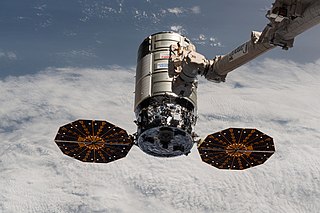
NG-14, previously known as OA-14, was the fifteenth flight of the Northrop Grumman robotic resupply spacecraft Cygnus and its fourteenth flight to the International Space Station under the Commercial Resupply Services (CRS-1) contract with NASA. The mission was launched on 3 October 2020, at 01:16:14 UTC.

SpaceX CRS-23, also known as SpX-23, was a Commercial Resupply Service mission to the International Space Station, successfully launched on 29 August 2021 and docking the following day. The mission was contracted by NASA and was flown by SpaceX using the Cargo Dragon C208. This was the third flight for SpaceX under NASA's CRS Phase 2 contract awarded in January 2016. It was the second mission for this reusable capsule.
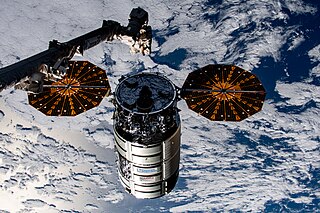
NG-19 is the nineteenth flight of the Northrop Grumman robotic resupply spacecraft Cygnus and its eighteenth flight to the International Space Station (ISS) under the Commercial Resupply Services (CRS-2) contract with NASA. The mission launched on 2 August 2023 at 00:31:14 UTC. This is the eighth launch of Cygnus under the CRS-2 contract.
References
- ↑ Tenenbaum, David. "UW team's plants return to Earth after growing in space". Wisc.edu. Retrieved 25 May 2016.
- ↑ Dueck, Sandy. "Observing how microbes adapt in a spaceflight environment". Space Daily. Retrieved 25 May 2016.
- ↑ Lamb, Annette. "Resources for Teacher Librarians, Classroom Teachers, Students, and Parents" (PDF). ScholarWorks. Retrieved 13 July 2016.
- 1 2 "Features: A biochemist in space". www.asbmb.org. Retrieved 2016-07-13.
- ↑ "Data Repository | NASA GeneLab". genelab.nasa.gov. Retrieved 2016-07-13.
- ↑ "Building a worldwide genetic library BRIC-by-BRIC" . Retrieved 2016-07-13.
- ↑ "GeneLAB research platform to expand life sciences research on station" . Retrieved 2016-07-13.